Dog Training Techniques: Methods and Preparation for Success
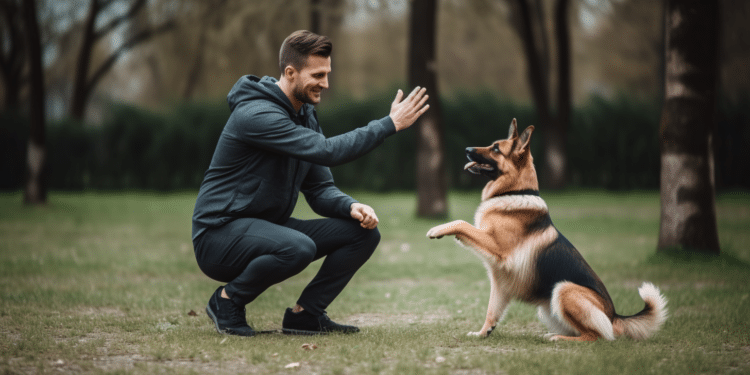
As a professional copywriting journalist, I understand the importance of effective dog training. Whether you’re looking to teach obedience commands, modify behavior, or simply strengthen your bond with your furry friend, understanding the various dog training techniques and properly preparing for the training process are crucial for success.
In this comprehensive guide, we will explore different dog training methods, including positive reinforcement, obedience, behavioral, clicker, leash, and crate training. We’ll also provide tips on how to address common challenges and tailor your approach to specific dog breeds and different life stages. By the end of this guide, you’ll have a solid understanding of the principles of effective dog training and be ready to start your training journey with your beloved pet.
Key Takeaways:
- Effective dog training is essential for a well-behaved and happy pet.
- Understanding various dog training techniques and methods is crucial for success.
- Positive reinforcement, obedience, behavioral, clicker, leash, and crate training are all valuable tools for shaping your dog’s behavior.
- Training challenges are common, but with patience and consistency, you can overcome them.
- Professional dog trainers can offer specialized expertise and guidance.
Why Training Your Dog is Important
As a professional dog trainer, I firmly believe that training your dog is crucial for a harmonious and enjoyable relationship. Training not only facilitates effective communication between you and your pet, but also promotes good behavior and prevents potential issues. It’s essential to understand that dogs thrive on positive reinforcement, making it the ideal approach to training. Whether you’re conducting obedience or behavioral training, always prioritize positive reinforcement techniques to shape your dog’s behavior in a humane and effective manner.
Obedience training is particularly important as it lays the foundation for proper behavior and ensures that your dog understands basic commands. Through positive reinforcement techniques, like rewarding desirable behavior, you can teach your furry friend to sit, stay, come, and heel. Behavioral training, on the other hand, focuses on addressing specific issues or unwanted behaviors in dogs, such as separation anxiety or excessive barking. By identifying the root cause and implementing appropriate training methods, you can modify and improve your dog’s behavior.
Remember, training your dog is an ongoing process that requires effort, patience, and consistency. With positive reinforcement techniques, you can successfully communicate with your pet and foster good behavior while strengthening your bond.
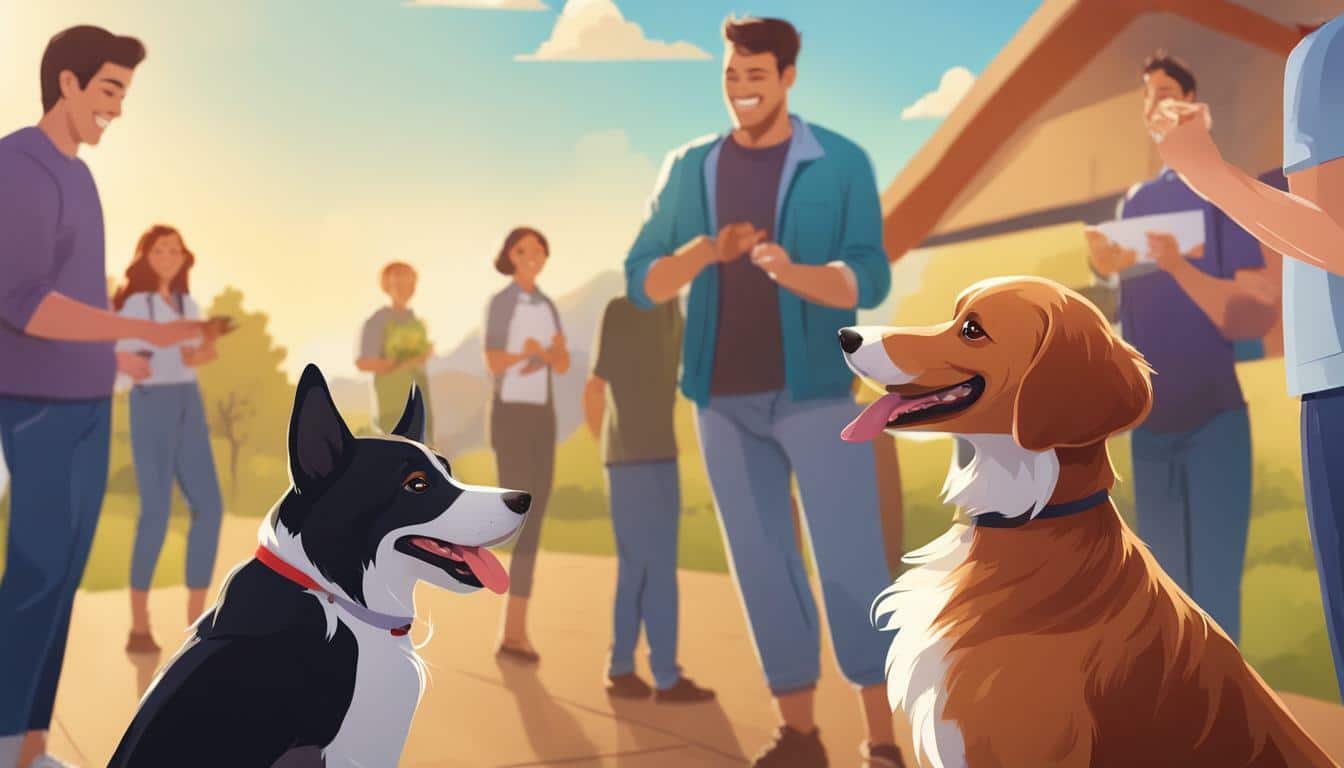
“The mediocre teacher tells. The good teacher explains. The superior teacher demonstrates. The great teacher inspires.” ― William Arthur Ward
Positive Reinforcement Training for Dogs
Positive reinforcement training is a highly effective and humane method that focuses on rewarding desired behaviors. The principle behind this method is simple: dogs learn through the association of good behavior with positive outcomes such as treats, praise, and playtime.
This creates a positive cycle, where dogs are motivated to continue exhibiting good behavior to receive rewards. Positive reinforcement is a popular training technique because it encourages dogs to learn at their own pace, with minimal stress or punishment, and creates a positive relationship between pet and owner.
Clicker training is a popular form of positive reinforcement training that uses a clicker to mark desired behaviors followed by a reward. The clicker is a small handheld device that makes a distinct sound when pressed. Dogs learn to associate this sound with positive outcomes, such as praise or a treat. This method is especially useful for teaching new behaviors or tricks and can be used in conjunction with other positive reinforcement methods.
The benefits of positive reinforcement training are numerous. Beyond its effectiveness, it also fosters trust, strengthens the bond between dog and owner, and can improve a dog’s overall behavior and quality of life. Positive reinforcement techniques can be used for obedience training, behavior modification, or simply to reinforce good behavior.
| Pros | Cons |
|---|---|
| Encourages good behavior through positive reinforcement | May not be effective for all dogs or behaviors |
| Creates a positive relationship between dog and owner | Requires consistency and patience to be effective |
| Stress-free and humane training method | May take longer to see results compared to other methods |
When using positive reinforcement training, it’s essential to be consistent with rewards and timing. This ensures that dogs understand which behaviors are being rewarded and why. It’s also important to set clear goals and start with simple behaviors before moving on to more challenging ones. With patience, consistency, and a positive attitude, positive reinforcement training can be a highly effective training method for dogs of all ages and breeds.
Obedience Training for Dogs
When it comes to dog training techniques, obedience training is one of the most fundamental. Obedience training focuses on teaching basic commands such as sit, stay, come, and heel, and lays the foundation for proper behavior and effective communication between you and your pet.
At the heart of obedience training is positive reinforcement, which involves rewarding desired behaviors. This method is not only effective but also humane and builds trust and respect between you and your dog.
One of the essential tips for successful obedience training is consistency. Repeat the same commands and reward good behavior every time it occurs. Using a clear, firm, and positive tone of voice also reinforces the desired behavior.
Another crucial tip is practicing patience. Dogs require time and repetition to learn commands, and each dog learns at their pace. Rushing or becoming frustrated will only hinder progress and harm your relationship with your dog.
To get started with obedience training, begin in a quiet, low-distraction environment and gradually increase the difficulty level. Use treats and verbal praise to reward good behavior, and gradually reduce the frequency of treats as your dog becomes more proficient in their commands.
Remember, dogs thrive on positive reinforcement, and obedience training offers an excellent opportunity to strengthen the bond between you and your furry companion.
Behavioral Training for Dogs
Behavioral training is a crucial aspect of dog training as it focuses on correcting specific issues or unwanted behaviors in dogs. Whether it’s barking, chewing, digging, or destructive behavior, it’s essential to understand the root cause and implement appropriate training methods to modify your dog’s behavior.
Positive reinforcement training is a highly effective technique for behavioral training as it focuses on rewarding desired behaviors, rather than punishing unwanted ones. By using treats, praise, and other rewards to reinforce good behavior, dogs learn to associate positive outcomes with good behavior.
In cases where negative behaviors persist, it may be necessary to implement more specialized forms of training, such as clicker training or behavior modification techniques. It’s important to seek advice from a professional dog trainer or behaviorist to ensure you’re using the most effective training methods for your dog.
Through consistent and appropriate training methods, it’s possible to address unwanted behaviors and strengthen the bond between you and your dog.
“Behavioral training is crucial for correcting unwanted behaviors in dogs. By using positive reinforcement methods, we can modify behavior and strengthen our bond with our furry companions.”
Clicker Training for Dogs
Clicker training is an effective and popular method of positive reinforcement dog training. The clicker is a small handheld device that makes a clicking sound when pressed. It is used to mark desired behavior so the dog can associate the behavior with positive reinforcement. The clicker is often paired with treats and praise as rewards for a job well done.
Clicker training can be used to teach your dog a variety of behaviors and tricks. It’s a great way to communicate with your dog and build a strong bond. The key to success with clicker training is consistency and patience. It can take time for your dog to understand what you’re asking of them, so be sure to start with simple commands and gradually increase the difficulty level.
Here are some tips for using clicker training effectively:
- Start by clicking the clicker and immediately giving your dog a treat. Repeat this several times so your dog associates the sound of the clicker with a treat.
- Choose a behavior you want to teach your dog, such as “sit.”
- When your dog sits, immediately click the clicker and give them a treat.
- Repeat this process several times until your dog sits every time you click the clicker.
- Once your dog has mastered “sit,” move on to other behaviors and tricks.
Clicker training is a positive and fun way to train your dog. It can improve your dog’s behavior and strengthen your bond. Be sure to keep training sessions short and rewarding, and always end on a positive note.
Leash Training for Dogs
Leash training is an essential part of dog training. It is the process of teaching your dog to walk calmly on a leash without pulling. It not only ensures a pleasant walking experience for you and your furry companion but also promotes safety and control over your dog’s behavior. Here are some effective leash training techniques that utilize positive reinforcement for dogs:
Loose Leash Walking
Loose leash walking is the technique of teaching your dog to walk on a leash without pulling. To begin, attach the leash to your dog’s collar and start walking. As soon as your dog pulls on the leash, stop walking and wait for your dog to come back to you. As soon as your dog walks by your side without pulling, give them a treat and continue walking. Repeat this process, rewarding your dog every time they walk by your side without pulling. This technique emphasizes positive reinforcement for dogs and teaches them that the reward for walking without pulling is continued movement.
Proper Leash Handling
Proper leash handling is another essential part of leash training. Holding the leash too tightly can cause discomfort for your dog, whereas holding it too loosely can lead to loss of control. The ideal way to hold the leash is to wrap it around your wrist and keep it loose enough so that your dog can walk comfortably but tight enough to ensure control. Using a harness instead of a collar can also offer better control and prevent discomfort.
When starting leash training, it’s crucial to keep training sessions short and gradually increase the duration and distance of the walks. Remember to always praise and reward your dog for good behavior, and remain patient throughout the training process.
Crate Training for Dogs
Crate training is a valuable tool for dog owners that provides a safe and comfortable space for pets and helps with behavior management. Dogs instinctively seek out a den-like space for security and comfort, and a crate can serve as their personal den. Crate training can also aid in housebreaking and prevent destructive behaviors such as chewing and digging.
The key to successful crate training is to make it a positive experience for your dog. Introducing the crate slowly and using positive reinforcement techniques such as treats and praise can help your dog associate the crate with good things.
To start crate training, choose a size that is appropriate for your dog’s breed and size. The crate should be large enough for your dog to stand up and turn around comfortably, but not so large that they have room to eliminate in one corner.
Place the crate in a quiet, comfortable area of your home where your dog can rest undisturbed. Introduce your dog to the crate by placing treats and toys inside and leaving the door open. Encourage your dog to explore the crate on their own terms.
Once your dog is comfortable entering and exiting the crate, begin feeding them meals inside the crate with the door closed. Gradually increase the amount of time your dog spends in the crate with the door closed, using treats and praise to reward calm behavior.
Some dogs may initially resist being in the crate, showing signs of anxiety or distress. If this occurs, go back a step in the training process and move more slowly. You may also consider consulting with a professional dog trainer for additional guidance.
With patience and positive reinforcement, crate training can become a beneficial part of your dog’s routine and an effective tool for managing their behavior.
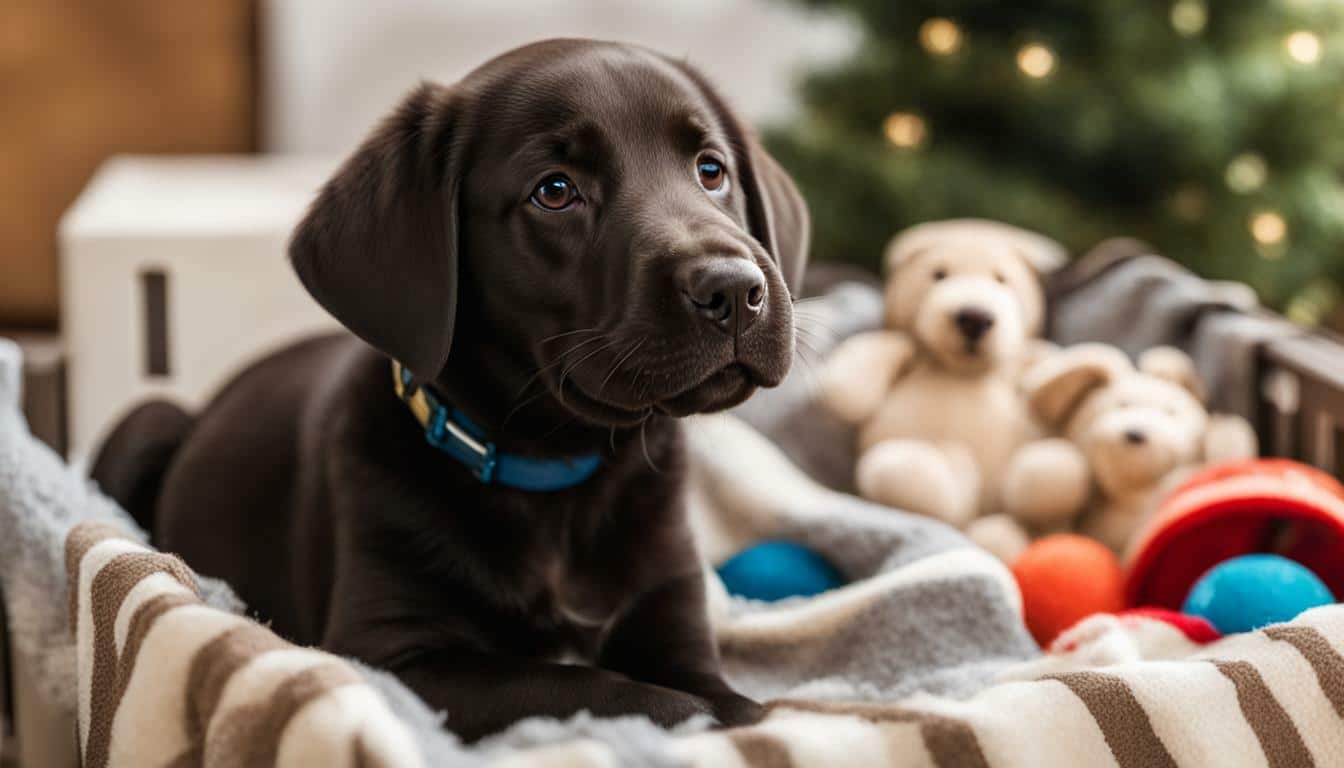
Addressing Common Dog Training Challenges
Every dog is unique, and while training can be a rewarding experience, it can also have its challenges. As a professional dog journalist, I’ve encountered several issues that dog owners commonly face during their training journey. Here are some of the most common challenges and tips for overcoming them.
Stubbornness
Some dogs can be strong-willed and stubborn, making them difficult to train. If your dog is resistant to training, it’s essential to remain patient and consistent. Avoid punishment and instead focus on positive reinforcement techniques. Try breaking training sessions into shorter, more frequent sessions to keep your dog engaged. Additionally, consider increasing the value of rewards used during training to encourage compliance. Remember that training takes time, and progress may not be immediate.
Distractions
Dogs have a natural curiosity, and environmental distractions such as noises, smells, and other animals can make focusing on training difficult. When training your dog, begin in a quiet, familiar environment and slowly increase environmental distractions to build their focus and response to commands. Remember to keep training sessions short and engaging to maintain your dog’s attention.
Fear-Based Behaviors
Dogs may exhibit fear-based behaviors such as cowering, growling, or avoidance, making training sessions challenging. It’s essential to understand the root cause of these behaviors and work to provide a safe and comfortable environment for your dog. Punishment should never be used for fear-based behaviors, as it can worsen the situation. Instead, use positive reinforcement techniques and gradually build your dog’s confidence through training in a controlled and safe environment.
Dog Behavior Modification
Some dogs may have behavioral issues such as aggression, separation anxiety, or destructive chewing that require behavior modification. While training can help address these behaviors, it’s essential to work with a professional dog trainer or a veterinarian behaviorist for guidance. Behavior modification may require an individualized plan and specialized techniques to address the specific behaviors. Remember that behavior modification takes time and consistent effort but can lead to a happier and healthier pet.
Dog Training Tips
Remember that each dog is unique and that training methods may need to be adapted to suit their individual needs. Consistency, patience, and positive reinforcement are key to successful training outcomes. Never use punishment or physical force during training, as it can harm your dog and damage the trust and bond between you. Keep training sessions short, engaging, and fun, and don’t forget to celebrate your dog’s successes along the way.

Training Tips for a Successful Journey
Training your dog can be a challenging yet rewarding experience. As with any training endeavor, consistency, patience, and preparation are key. To ensure success, here are some helpful tips to keep in mind:
- Set realistic goals: Before starting any training, it’s important to set achievable goals. Break down larger behaviors into smaller, more manageable tasks and celebrate each success along the way.
- Remain consistent: Consistency is crucial in training your dog. Stick to a regular routine, use the same commands each time, and provide rewards consistently for desired behaviors.
- Use positive reinforcement: Positive reinforcement techniques, such as treats and praise, are highly effective in training dogs. By rewarding desired behaviors, you can encourage your dog to repeat those behaviors in the future.
- Be patient: Training takes time and patience. Don’t expect immediate results, and avoid becoming frustrated or giving up. Instead, remain calm and positive throughout the process.
- Understand your dog: Every dog is unique and may respond differently to training. By understanding your dog’s individual needs, temperament, and personality, you can tailor your training approach to suit them best.
- Make it fun: Training should be enjoyable for both you and your dog. Incorporate play and games into your training sessions, and make sure your dog is having fun.
- Get creative: Don’t be afraid to think outside the box and try new training techniques. Mix up your routine, use different rewards, and experiment with various training methods to find what works best for your dog.
By keeping these tips in mind, you can make your training sessions more productive and enjoyable. Remember, training isn’t a one-time event, but an ongoing process that requires patience, consistency, and a positive attitude.
The Role of Professional Dog Trainers
While many dog owners successfully train their pets at home, there are times when enlisting the help of a professional dog trainer may be beneficial. Professional trainers offer specialized expertise and guidance, particularly when dealing with challenging behaviors or specific training needs. They can assess your dog’s behavior and create a tailored training plan that meets their individual needs.
Professional dog trainers utilize various dog training techniques, including positive reinforcement, obedience training, and behavioral training, to modify and shape your dog’s behavior. Working with a professional trainer may also help you build a stronger bond with your dog by improving communication and trust.
When choosing a professional trainer, it’s essential to do your research and ensure they have the necessary qualifications and experience. Look for trainers who use positive reinforcement techniques and have a good track record of success.
Remember that professional trainers should supplement, not replace, your efforts to train your dog at home. You should still be involved in your dog’s training to maintain consistency and reinforce positive behaviors.
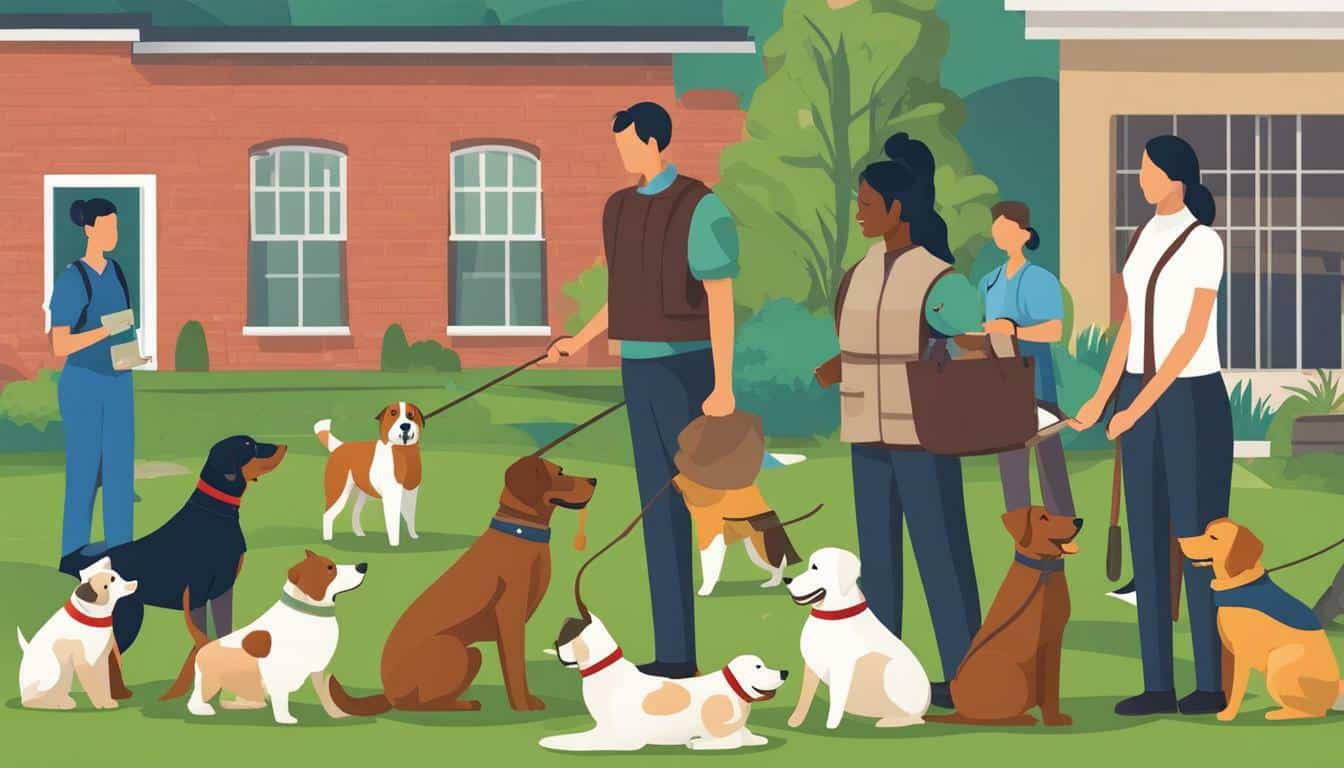
“Professional trainers offer specialized expertise and guidance, particularly when dealing with challenging behaviors or specific training needs.”
Training for Specific Dog Breeds
When it comes to training your dog, it’s important to consider their breed’s unique characteristics and temperaments. Different dog breeds may require tailored training approaches to effectively communicate with them and ensure successful training outcomes.
For example, breeds such as Border Collies and German Shepherds are highly intelligent and excel in obedience training, while breeds like Beagles and Basset Hounds may require more patience during housetraining due to their stubbornness.
Additionally, some breeds may have specific behavioral concerns that require targeted training. Breeds with a predisposition to anxiety and fearfulness, like the Chihuahua and Greyhound, may benefit from desensitization training to help them feel more comfortable in various situations.
Ultimately, understanding the unique traits and needs of your dog’s breed can help inform your training methods and ensure effective communication and bonding between you and your furry friend.
Tip: Consider researching your dog’s breed to gain insight into their unique characteristics and behavioral tendencies and tailor your training approach accordingly.
Training for Different Life Stages
Dogs go through various life stages, each with its own unique training requirements. It’s important to tailor your training approach to suit these different stages to ensure the best possible outcomes.
Puppy training: Puppies require basic obedience training and socialization to ensure they grow into happy, well-adjusted adult dogs. Positive reinforcement is key in this stage, with treats and praise used to reward desired behaviors and shape good habits. Puppy-proofing your home is also essential to prevent potential accidents and destructive behavior.
Adolescent training: Adolescent dogs may test their boundaries and exhibit unwanted behaviors such as chewing and jumping. Consistency and patience are crucial in this stage, with continued focus on obedience training and positive reinforcement techniques. Exercise and mental stimulation can also help channel energy and prevent boredom.
Adult training: Adult dogs may benefit from advanced obedience training and targeted behavioral training to address any lingering issues. Positive reinforcement remains a key tool, with continued reinforcement of good habits and clear communication with your pet.
Senior training: Senior dogs may require modifications to their training routine to accommodate any mobility or health issues. Focus on maintaining mental stimulation through training games and gentle exercises, as well as ensuring a comfortable and safe living environment.
By adapting your training methods to suit your dog’s life stage, you can ensure their ongoing success and happiness.
Training for a Lasting Bond
Beyond the practical benefits of obedience and behavior modification, dog training plays a crucial role in building a deep and lasting bond between you and your furry companion. The time and effort you invest in training will pay off in the form of a happy, well-behaved dog that trusts and respects you.
Positive reinforcement techniques are particularly effective in fostering a strong bond with your dog. By rewarding desired behaviors with treats, praise, and affection, you’re reinforcing the bond of trust and mutual respect between you and your pet. Obedience training also plays a significant role in strengthening your bond, as it allows you to effectively communicate with your dog and build a partnership based on trust and respect.
Training also provides an opportunity for quality time and socialization, which can further solidify your bond. Regular training sessions allow you to spend dedicated time with your dog, strengthening your connection and deepening your understanding of each other. Socialization through training classes or playdates can also help your dog become more confident and comfortable in social settings, which is essential for a well-rounded and happy pet.
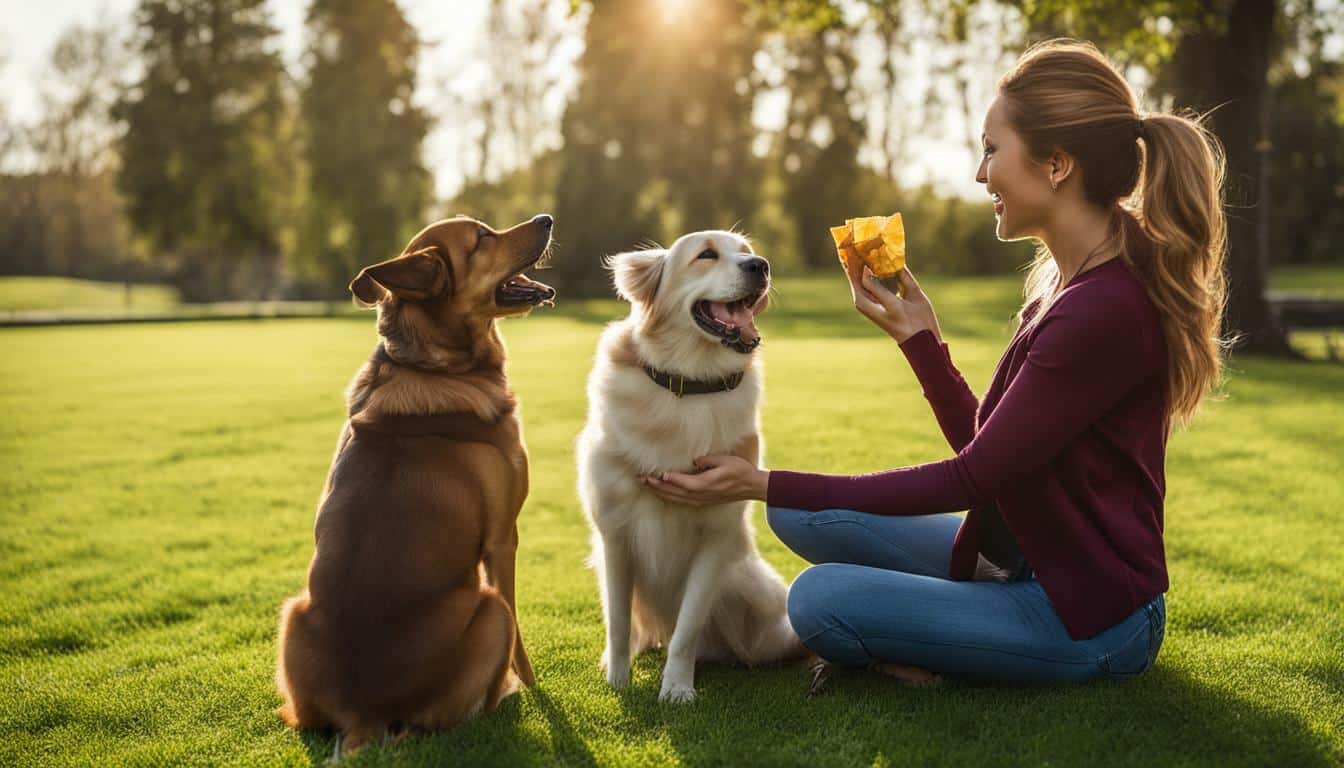
Remember, training is not just about teaching basic commands or addressing problem behaviors. It’s about building a relationship of trust, respect, and mutual understanding that will last a lifetime. By investing time and effort into training, you’re not only ensuring your dog’s well-being but also creating memories and experiences that will enrich both of your lives.
Conclusion
Training your dog is an investment in your pet’s overall well-being and happiness. By taking the time to understand effective dog training methods, such as positive reinforcement and obedience training, you can shape your dog’s behavior and build a lasting bond.
Behavioral training is essential for addressing specific issues, while crate and leash training provide a safe and comfortable environment for your dog. To ensure success, consistency and patience are key, along with setting realistic goals and understanding your dog’s individual needs.
Enlisting the help of a professional dog trainer can also offer specialized expertise and guidance. Additionally, understanding breed-specific considerations and adapting your training methods to suit different life stages can help ensure effective communication and successful training outcomes.
Ultimately, beyond obedience commands and behavior modification, training plays a significant role in strengthening the bond between you and your dog. By incorporating positive reinforcement, patience, and consistency into your training sessions, you can enjoy the benefits of a well-behaved and happy canine companion.
FAQ
Q: Why is training your dog important?
A: Training your dog is important because it allows effective communication, promotes good behavior, and prevents potential issues. Positive reinforcement, obedience training, behavioral training, and behavior modification techniques are valuable tools in shaping your dog’s behavior.
Q: What is positive reinforcement training for dogs?
A: Positive reinforcement is a highly effective and humane training method that focuses on rewarding desired behaviors. Treats, praise, and clicker training are used to associate good behavior with positive outcomes.
Q: How do I obedience train my dog?
A: Obedience training lays the foundation for proper behavior and ensures your dog understands basic commands. Positive reinforcement techniques are used to teach commands like sit, stay, recall, and heel.
Q: What is behavioral training for dogs?
A: Behavioral training addresses specific issues or unwanted behaviors in dogs, such as excessive barking, chewing, or separation anxiety. Understanding the root cause and implementing appropriate training methods can help modify and improve your dog’s behavior.
Q: How does clicker training work for dogs?
A: Clicker training utilizes a clicker to mark desired behaviors, followed by a reward. This method is effective for teaching new behaviors and tricks to your dog.
Q: What are effective leash training techniques for dogs?
A: Leash training ensures a well-behaved dog that walks calmly without pulling. Techniques such as loose leash walking and proper leash handling are important for enjoyable walks.
Q: How do I crate train my dog?
A: Crate training provides a safe space for dogs and aids in housebreaking, separation anxiety, and behavior management. The process involves step-by-step training and making the crate a positive experience for your dog.
Q: What should I do when facing common dog training challenges?
A: When facing challenges like stubbornness, distractions, or fear-based behaviors, strategies can help overcome them. Additional tips to enhance training sessions are also provided.
Q: What are some training tips for success?
A: Consistency, patience, setting realistic goals, and understanding your dog’s individual needs are important tips for successful training. These tips can make your training sessions productive and enjoyable.
Q: What is the role of professional dog trainers?
A: While many owners train their dogs at home successfully, professional trainers offer specialized expertise and guidance. The benefits of enlisting their help and choosing the right trainer are discussed.
Q: Are there breed-specific training considerations?
A: Yes, different dog breeds may require tailored training approaches due to unique characteristics and temperaments. Training tips for popular breeds are provided to ensure effective communication and successful outcomes.
Q: How does training vary for different life stages?
A: Dogs go through various life stages, from puppies to seniors, each with its own training requirements. Adapting training methods to suit different life stages is important for effective training.
Q: How does training strengthen the bond with my dog?
A: Training plays a significant role in strengthening the bond between you and your dog by fostering trust, enhancing communication, and deepening the connection. It goes beyond behavior modification and obedience commands.






